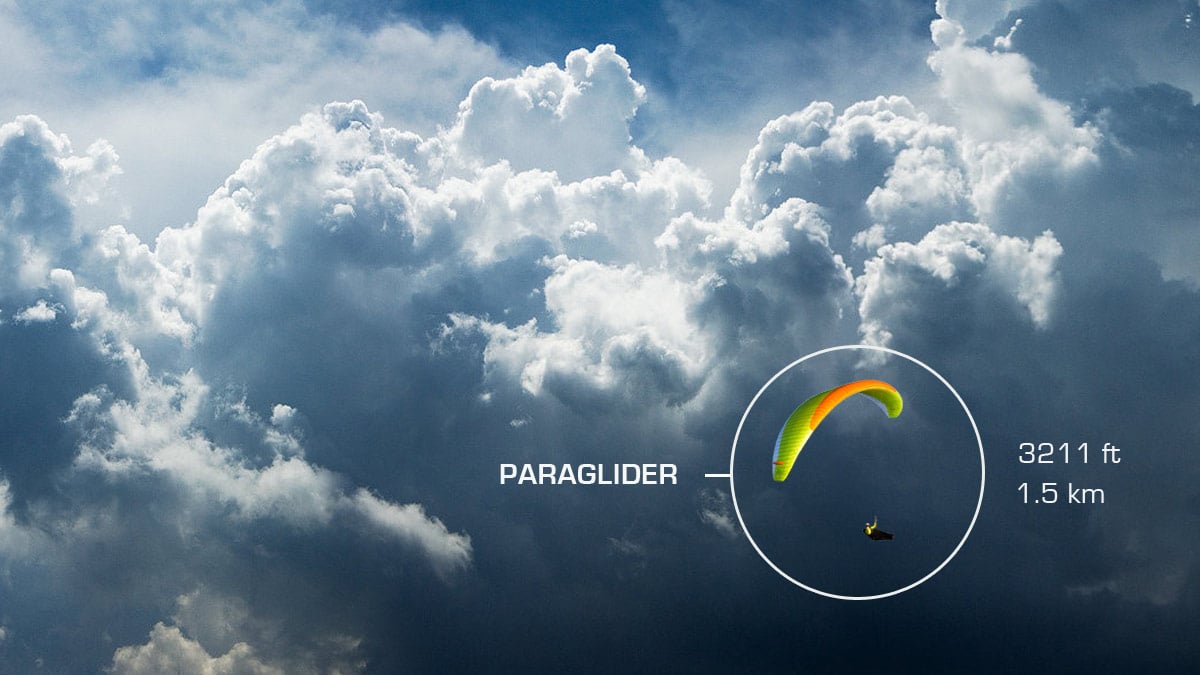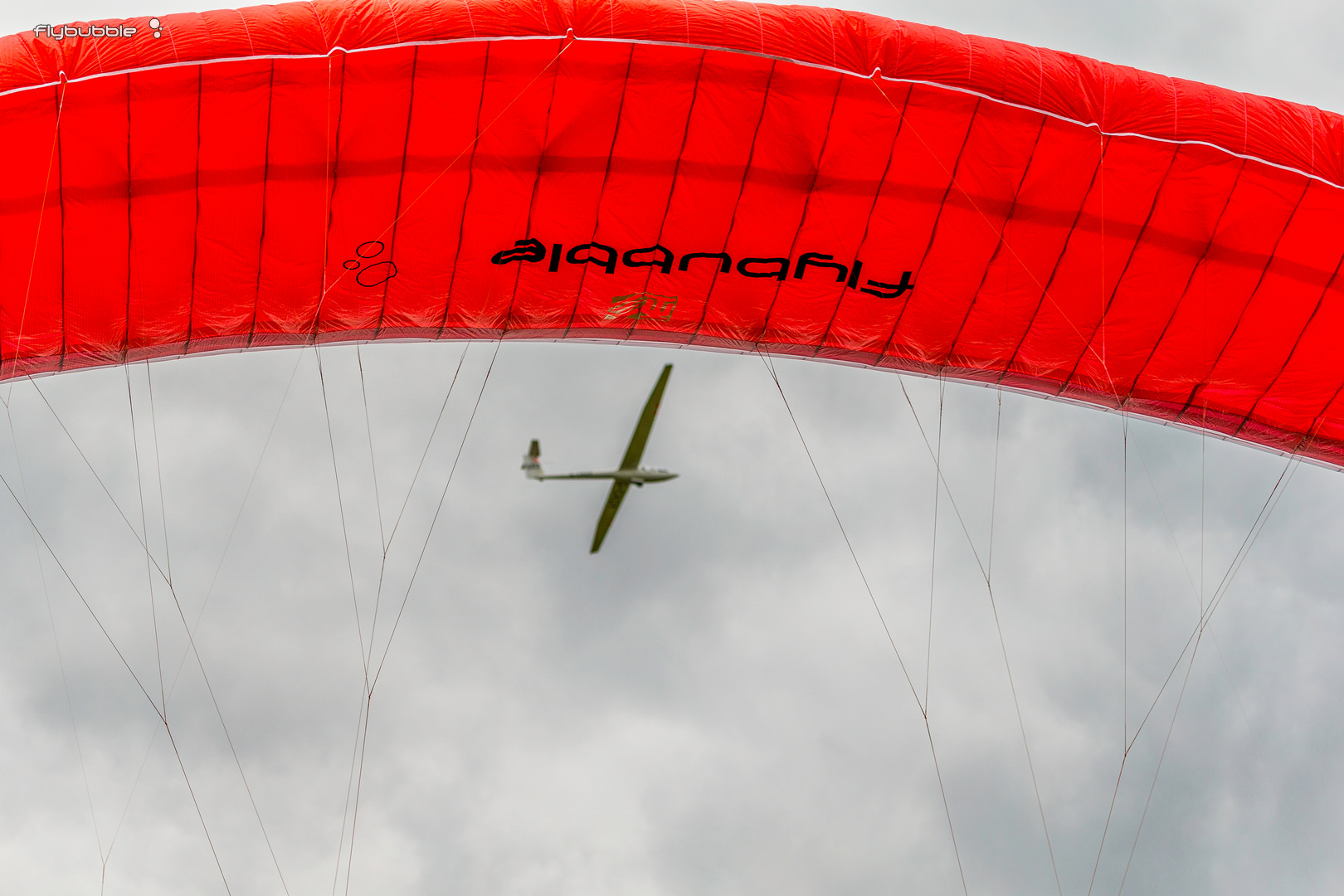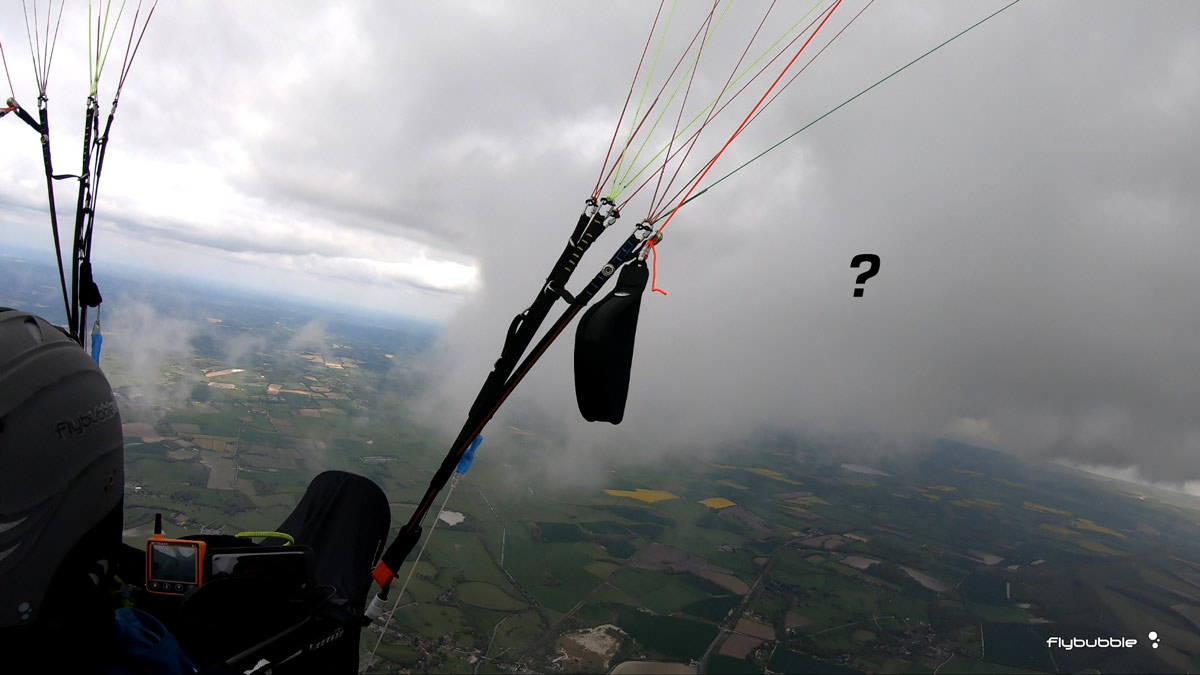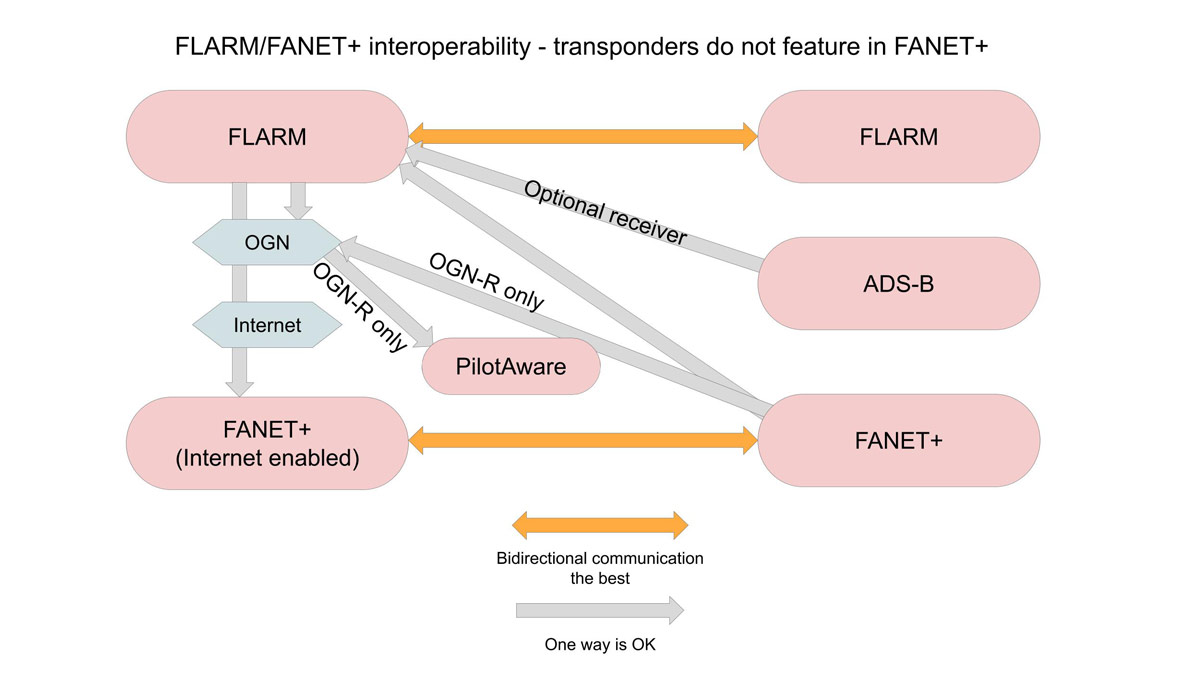
Got a question relating to free flight instruments not answered in the user manual? We've compiled a collection of frequently asked questions (FAQ) and answers relating to free flight instruments, including vario-only varios, alti-varios and alti-vario-gps combos. For brand or model specific questions or support, it's generally best to contact the manufacturer's support team directly, since no one knows them better than they do and it's likely they've been asked your question before.
Where can I get my free flight instrument repaired?
We don't offer repairs however, at the time of writing, the following people do offer repairs for free flight instruments: Vario Service and Volirium.
Otherwise you should contact the manufacturer of your instrument directly. If your instrument is old, and the manufacturer no longer exists, you should contact one of the general repair centres listed above.
How do flight alarms work?
A cyclist is more visible to car drivers wearing bright clothing, and arguably safer. Flight alarms are the digital equivalent of a high-vis jacket. You might not be able to see the aircraft on the other side of a tall cloud, but you could see it on a screen in your cockpit, and your instrument could also make a noise when aircraft get close.
This is the principle at work in commercial airliners, but with a lot more infrastructure. In the seafaring world, locator beacons offer routine conspicuity and improve search and rescue. For commercial aircraft, this has to work all the time and every time, with the attendant astronomical cost. There is a more cost effective solution for gliding (sailplanes, hang gliders and paragliders).

FLARM (FLight alARM) is popular amongst sailplanes. The typical FLARM unit sends and receives signals and calculates the trajectory of nearby air traffic to warn of collision risk. This unit is too large and costly for most free flight pilots, but for a very small cost to a manufacturer they can make a tiny device that transmits FLARM signals. As the slower moving HG or PG, we really want the faster moving vehicle to see us.
FANET (Flying Ad-hoc NETwork) is a similar lower cost method of transmitting position and sharing information, but not for collision avoidance, as that is a FLARM patent.
FANET+ is a combination of a FANET transceiver and a 'FLARM Beacon' (FLARM transmitter).
Where can I get a flight alarm?
The Skytraxx 2.1 and Skytraxx 3.0 are available in FANET+ versions. If you just want to add conspicuity to your current instrument setup, the cheaper Skytraxx Beacon offers FLARM (Tx) and acts as a flight logger.
You’ll see all the FANET aircraft on the Skytraxx 3.0, but you can actually receive position information from nearby FLARM aircraft as well via the OGN (Open Glider Network) if the unit is fitted with a WiFi dongle and connected to the Internet via a mobile hotspot. However, this information is via a number of relays and is not 100% live.
The Naviter Blade also has these features, and it looks like they will ripple down into future versions of the Oudie. Other manufacturers may follow suit.
As FLARM relies on a glider equipped with a receiver, and many gliding club aircraft don’t carry the same, it’s not a guarantee of visibility. It just improves the odds of being seen, as a lot of gliders that are privately owned and flown cross country have the necessary hardware fitted for collision avoidance and moving map navigation.
Flight alarms and the CAA?
The Civil Aviation Authority is pushing for 'Electronic Conspicuity' (EC) for all airspace users. It’s best that we have our own networks rather than having costly, heavy and unsuitable transponders or ADS-B transceivers forced on us.
Although our best method to stay safe in the air will always be to ‘see and avoid’, we think FLARM (Tx) is valuable, affordable and works when we need it most (close to cloud base, with sailplanes on approach at over 100km/h).
Ruth Kelly adds: "Although the biggest user group is gliders, quite a few powered aircraft also have FLARM (mine does) and still more have Pilot Aware, which is capable of receiving FLARM data. The point being, of course, that any paraglider suitably equipped with one of these FANET devices will be more visible to GA aeroplanes too. Speaking as someone who loves to fly near clouds AND has more awareness than most GA pilots of paragliding I can only say that this is a good thing. Paragliders are devilishly hard to spot and closing speeds can be enormous - I usually cruise at 140-150 knots in my RV8. Making yourself more visible is always a good idea. Happy landings, Ruth."
FANET+ in practice

On the early May Bank Holiday, Greg went XC with a Skytraxx 2.1 and Steve saw his location on a smartphone running an app.
He’s visual and clear of cloud. FLARM equipped sailplanes in the immediate area would have had him on their displays. He would also have been visible electronically to sailplanes on http://www.glidertracker.org
Other FANET paraglider pilots could have seen him, as could anyone helping with retrieves. If the device was registered on Livetrack24, then he could be visible on xcrt.aero.
This flight alarm system demands no action or attention from the paraglider pilot - you simply switch on your enabled device, and fly.
Find out more about the Skytraxx range
What is Electronic Conspicuity (EC)?
As pilots the last thing we want is a collision with another aircraft. We fly under Visual Flight Rules and our main way of staying safe is to “see and avoid” other aircraft. Electronic Conspicuity (EC) refers to technology that can show us to nearby aircraft that may not have seen us visually.
How does EC work?
The hang glider or paraglider pilot carries a device which emits a signal which carries information about position and speed, and in some cases, with climb and sink as well. That is received by other instruments and displayed on a screen to show relative positions, and may also, depending on the technology available to the receiving pilot, give an audible alert. This is the electronic equivalent of a high visibility jacket
The PG/HG pilot may also have an instrument which is capable of receiving signals from these devices.
How could I be made aware of these other aircraft?
The most likely way would be seeing these other aircraft on the screen of your flying instrument.
How would others be made aware of me?
They’d be alerted by a visual display on a screen, or an audible warning, or both.
Who else would be able to see me? All aircraft?
No, it’s not as straightforward as that. There are a number of different technologies, with slightly different objectives, operating environments and cost constraints. You would see other aircraft sharing your type of technology only, but there are some technologies that can send or receive from more than just their own group. The analogy is that you can only understand people who speak your language, and there are a few unconnected languages in the EC world. There are also interpreters.
What would I see on the screen of my instrument?
For free flying, the majority of our instruments are FANET+ as far as EC is concerned. This means we can see other pilots with FANET or FANET+ instruments. You would see the locations of other FANET equipped pilots displayed on your moving map with altitude, and a colour to indicate climb or sink. There is also the possibility of seeing other technologies via the Open Glider Network (OGN), a system that helps different technologies talk to each other. You would need internet access on your device for the OGN to work.
What are FANET and FANET+?
FANET (Flying Ad-hoc NETworks) is a system for exchanging information between instruments. That information includes your aircraft type, 3D location, climb or sink status and a call sign. The information is shared between instruments without a central distribution point, although servers and replays can help to extend the area you receive information over and the networks outside your own that you can receive information from. FANET is an open protocol (anyone can use it) and it uses a licence free radio frequency. When we add FLARM (transmission only) to FANET we call it FANET+.
What is FLARM?
FLARM is an anti collision system used mostly by the gliding fraternity, and some helicopters. HG & PG are most at risk when close to cloudbase, and with the low speeds we are flying at relative to sailplanes it makes sense for them to be able to see us and take avoiding action. FLARM is proprietary and is licensed by paying a fee. Lower fees are often accompanied by more restrictions, and we accept the restriction to transmit only and to use the device enabled in HG & PG only.
Which free flight instruments and devices offer FANET+ as an option?
See current instruments we offer featuring FANET+.
Do you need some kind of subscription to the service once you have the relevant hardware?
No, use of FANET+ is subscription free, although you will have to renew the licence for the FLARM part of it annually, there is no charge for this.
How can I see if the FANET on my instrument is working properly?
Having checked your configuration, find another FANET equipped instrument on the site you are flying from and check your symbol & ID are present on their display.
How can I see if my FLARM beacon (transmitter) is working properly?
You’ll need Internet access, and you’ll need to be a sensible distance from an OGN relay. Visit https://www.gliderradar.com/ and centre the map on your current location. You’ll see some black diamonds with a white vertical line inside them, these are stations that receive your FLARM and feed it to the OGN. You’ll need to be within 20 miles of one of these which will, if your FLARM beacon (transmitter) is working, send it to the OGN where it will then put it up on a website like the one above. Click on the aircraft icon that appears in your location and it should have your details in the pop up you get.
Will I be seen by pilots of light aircraft and helicopters?
You will be seen by a minority of light aircraft only. Light aircraft carrying FLARM receivers (sailplane tow aircraft) and helicopters with the same will be able to see you. Light aircraft (mostly microlights and group A) carrying a PilotAware unit will be able to see you, as will those with newer ADS-B equipment if there are FLARM options installed. However, the vast majority of light aircraft carry only transponders, which are transmit only devices and can’t warn the pilot about anything.
Will I be seen by commercial airliners?
No.
What is ADS-B?
ADS-B is Automatic Dependent Surveillance—Broadcast. In plain English this means the aircraft location is taken from an on board GPS unit and transmitted on a special frequency which other aircraft with the technology can receive and thus know about all the aircraft around, as can the ground based Air Traffic Control Units.
What is a transponder?
A transponder is a device carried by an aircraft which responds when scanned by radar with information about the aircraft (squawk code, height, registration and location). The results are used by Air Traffic Control to keep track of aircraft. Transponder carrying aircraft do not see anything on the transponder, and they are only told about the risk of collision if they are on the radio and receiving a traffic or deconfliction service from ATC. The short answer is that someone flying with a transponder will not see you, ever.
How do FANET and FLARM relate to each other?
See the picture below. The gold arrows mean that two way communication is taking place, which means that the two technologies are talking. Silver arrows mean there is one way communication. Note that there is no communication with any of the other technologies, so FANET+ does not feature in aircraft equipped with transponders.

Why can’t I see FANET transmitting flyers on my instrument?
- You need to make sure the instrument is set up properly.
- Check that you have the feature switched on.
- Check that you are not filtering with Buddy lists or similar.
- Make sure your software is up to date.
- Check the antenna is connected and not damaged.
Brought to you by Flybubble
Like what we do? The best way to support us is to buy gear from us and recommend us to others, thank you!
